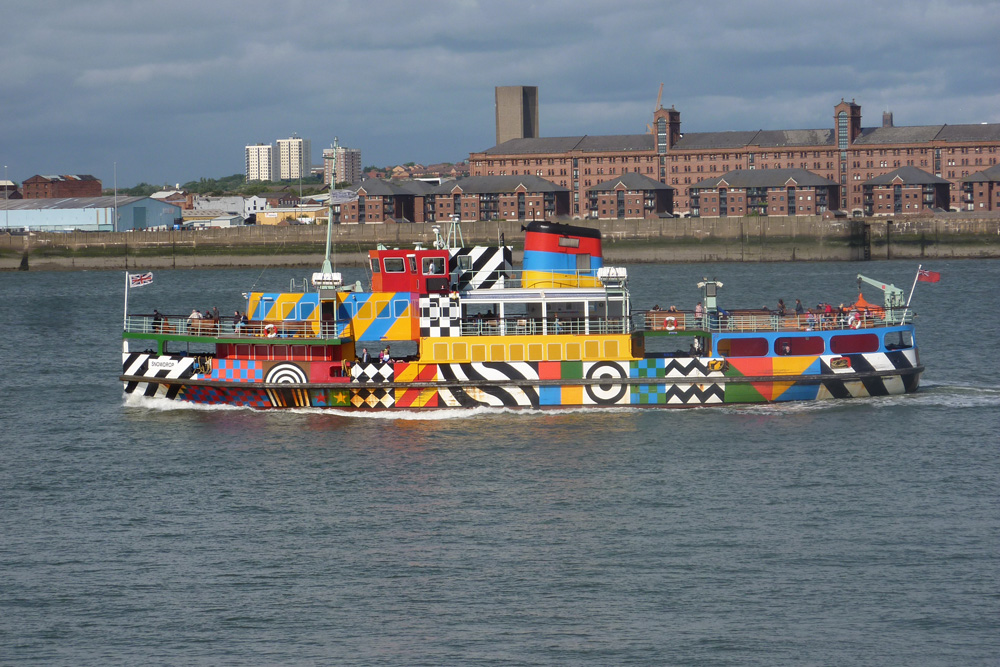Dear Councillor Robinson,
We would like to thank you and Gary Evans for the time you spent with us on 29th December explaining the elements of the Strategy prior to its consideration on 7th January.
We welcome Merseytravel’s initiative in examining holistically the future of the Ferries, and developing a long-term Strategy.
We have had no contact with the Consultants, and at the time of writing we have not been able to see the Consultant’s Report and the range of detailed information therein.
Nevertheless, the Strategy outlined in the Executive Summary contains, in our view, flaws which we request Merseytravel Members to address, and to amend the Strategy accordingly.
Loss of Woodside Stage:
The loss of a Wirral terminal, suggested to be Woodside, is unacceptable within the context of the City Region’s tourist development. Mersey Ferries provides a link to Wirral from the tourist hub of Liverpool City Centre and the Cruise Liner Terminal. Integration with other City Region policies should be a factor for consideration by Merseytravel, now part of the Combined Authority. Seacombe serves burgeoning New Brighton, while Woodside has the listed terminal building, the U Boat Story, the Tramway and Transport Museum, the ancient Priory, Hamilton Square’s architecture, and Birkenhead Market is only a short bus ride away. There is further development potential at the Woodside Hotel site, and the underused Merseytravel bus station with its adjacent bus-park, which should be capable of providing car parking similar to that at Seacombe.
More than any other terminal, Woodside is associated with the earliest history of the Mersey Ferries, in particular because of its Royal Charter, dating back to 1330. This heritage should be built upon, not abandoned. It should be recognised that a proposal to “mothball” the Woodside Stage is most unlikely ever to be reversed.
Cost-neutral Mersey Ferries Budget:
This financial objective may be appropriate in some instances, but not where its implementation prevents investment which delivers longer-term dividends, in this case the expansion of the tourism industry beyond the existing city-centre hot-spots.
Modernisation of the Mersey Ferry Services:
The extensive UK Heritage Railway sector thrives on retaining as many aspects of the past as possible – motive power. rolling stock, small intermediate stations, architectural features, and operational procedures. Similar Mersey Ferries heritage elements on vessels and ashore are an asset, not a liability, and need to be retained. We do not have figures available for the costs of maintaining the existing vessels in comparison to the capital costs of new-build craft. It is vital that the value of heritage assets is not ignored when new investments are assessed.
Commuter Service:
This should commence from Seacombe no later than 7.40am (not 8.00am as suggested) to allow passengers to reach work in Liverpool by about 8.00am. This service requires further promotion, and a joint ticketing system for bus passengers. Further cut-backs are premature.
Future of Royal Daffodil:
This laid-up vessel is scarcely mentioned. We continue to advocate the use of the Royal Daffodil for charter work, which is less intensive, and for which it is admirably suited in our opinion. There is scope for many more than the 18 charters undertaken by other vessels in the past year.
The new Strategy places emphasis on a new ferry with facilities to attract the corporate market. This part of the Strategy could be implemented very quickly by recommissioning the Royal Daffodil, which already has such facilities. The vessel would also be very suitable for wedding receptions. The recommissioning would allow an increased number of Manchester Ship Canal sailings. There is also the possibility of using the Royal Daffodil for excursion work to and from Llandudno and for local excursions along the Menai Straits while in North Wales (when she was refitted, she received a passenger certificate to allow such sailings, and the berthing head at Llandudno pier has just been rebuilt). She might also be able to perform tender duties at Llandudno, if large cruise ships called there rather than at Holyhead. All these activities should generate net revenue and would save the present costs being incurred while she is left in dock, deteriorating slowly.
Basing a Ferry in the Manchester Ship Canal:
In 2011, Mersey Ferries operated some Manchester Ship Canal trips which started at Ellesmere Port on days when the tide was unsuitable for using the entrance locks to the Canal. Patronage was low, possibly because the passage from the Pier Head through the locks from the Mersey to the Canal is regarded by passengers as an important part of the experience. The Strategy would involve some shorter trips on the Canal, but there is no evidence to suggest that they would be more successful than hitherto, and we argue that this proposal is highly speculative, much more so than our suggestions for the recommissioning of the Royal Daffodil.
Over the years, we have seen successive retrenchments by Mersey Ferries. The Woodside service especially has seen major reductions in service. We recognise that some retrenchments were inevitable, but we consider that the loss of the Woodside Stage in particular would be a drastic step too far, and we fear that this element of the Strategy could have the unintended consequence of leading to a furtherrun-down of the Mersey Ferries.
We would ask that the Strategy be adjusted in accordance with our suggestions (as typed in bold italics in the above paragraphs).
We would be grateful if you could arrange for this letter to be circulated to Members of the Merseytravel Committee.
Yours sincerely,
Andrew Hodgson,
Chair, Friends of the Ferries across the Mersey.
